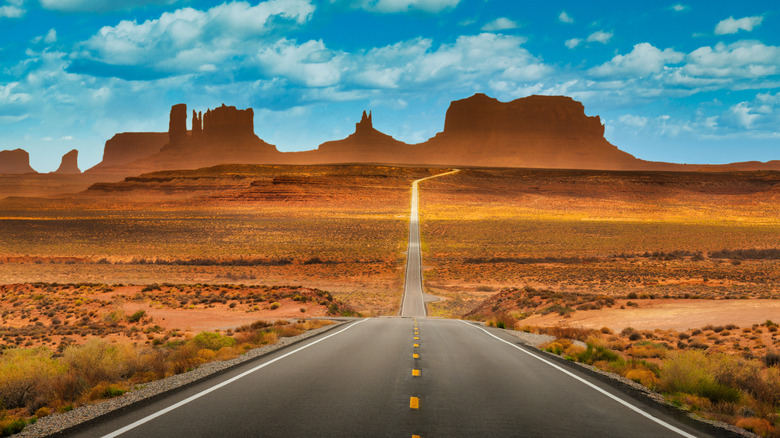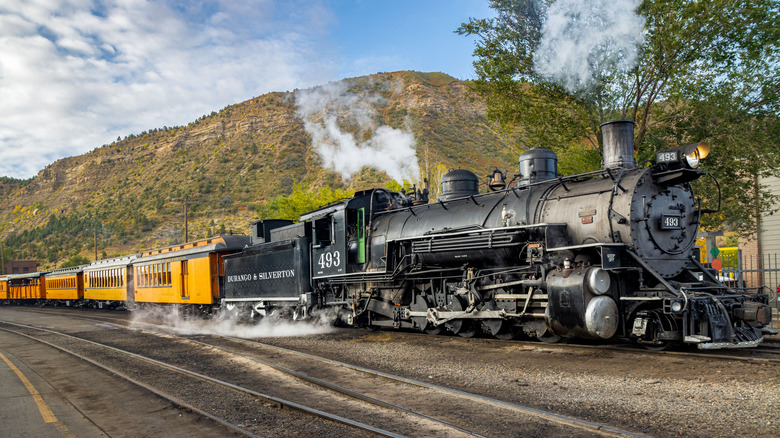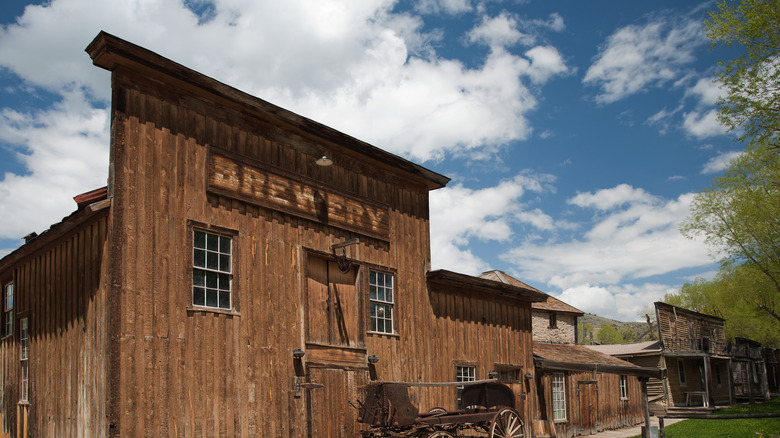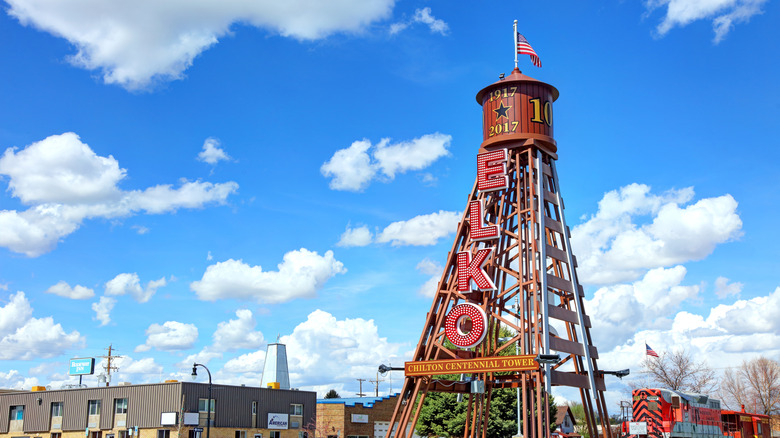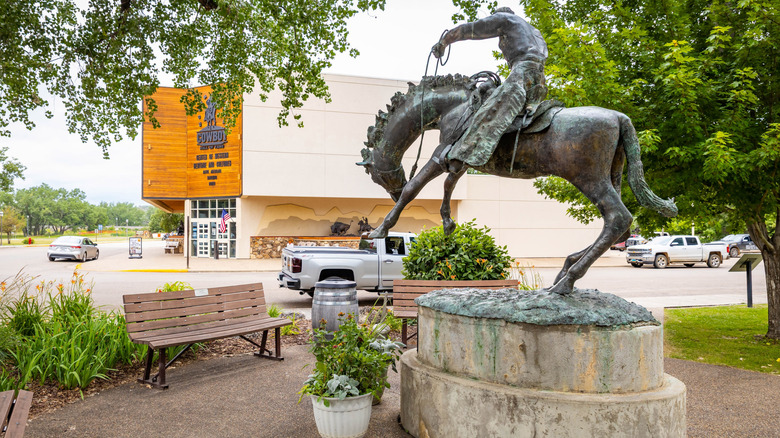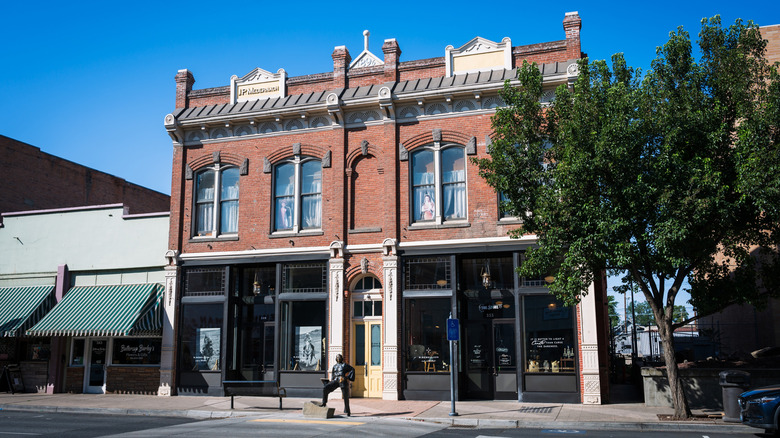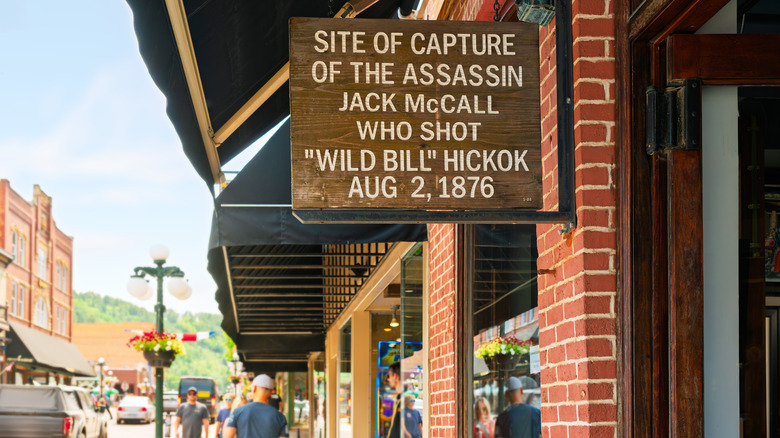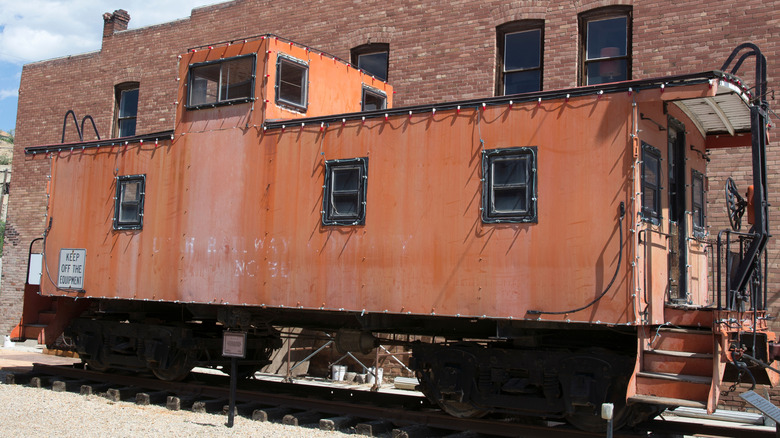These Grit-Soaked American Towns Are Wild West Escapes
When you picture the American West, images of cowboys, saloons, and dusty cattle drives might immediately come to mind. However, in many small towns across the region, those traditions aren't just history. They remain a vital part of daily life, whether that means ranchers making a living or communities welcoming travelers looking to step back in time.
If you're ready to pull on your boots and chase the frontier spirit, we've rounded up some of the most authentic Wild West towns in America. As someone who's spent a lifetime in the West, I've mixed in a few personal favorites, some of the classics, and uncovered off-the-trail spots that deserve a place on your Wild West bucket list.
From rodeos and rail depots to whiskey-soaked saloons and wide-open ranges, these towns each carry a piece of the Old West into the present. Together, they form a journey across all the states of the American West, a place like no other. Dust off those boots, because it is time to head west.
Arizona: Monument Valley and Oatman
Arizona is just about as Wild West as it gets, thanks to its long history of filming Western movies, the state's sweeping vistas, and its iconic saguaro cacti. Monument Valley is world-famous thanks to its role in several John Wayne classics, and it is an iconic symbol of the Southwestern United States. The instantly recognizable sandstone buttes rise out of the desert floor and take your breath away. Stop at John Ford Point to get the classic cowboy view, and you might even get the chance to snap a photo on horseback against the cinematic backdrop.
If you're looking for a town that mixes grit with the feel of a ghost town, head to Oatman, located near Kingman. This tiny Route 66 community has fewer than 100 residents who keep the Old West spirit alive. The historic Oatman Hotel Restaurant and Saloon is a must-see. The walls are plastered with thousands of dollar bills left behind by visitors over the decades. It's the oldest two-story adobe building in Mohave County, rumored to be haunted, and famously hosted Clark Gable and Carole Lombard on their honeymoon in the late 1930s.
Around town, twice-daily gunfight reenactments bring Main Street to life, while wild burros wander freely through the streets, nudging tourists for snacks and occasionally blocking traffic. The burros are the descendants of the pack animals once used by miners when this town was in its heyday.
California: Lone Pine and Pioneertown
In California, the charming town of Lone Pine (located near Sequoia National Park) keeps the spirit of the West alive with history and Hollywood flair. The rugged Alabama Hills just outside town have been the backdrop for hundreds of Western films and TV shows, from John Wayne classics to "The Lone Ranger." Downtown, historic buildings and saloons offer a glimpse into cowboy life, while annual events like the Lone Pine Film Festival and the Wild West Marathon celebrate the town's frontier roots. Don't miss the Museum of Western Film History, where you can see costumes, props, and memorabilia from decades of Westerns shot on location here. A unique town surrounded by majestic mountains, Lone Pine is a fantastic old-school Western destination.
Further south near Joshua Tree, Pioneertown was established in the 1940s as a live-in Old West movie set, built so actors could film by day and stay overnight. Today, it's a quirky desert town of about 500 people where the facades of false-front saloons and stables line Mane Street (yes, Mane like a horse). While visiting, you might stumble onto a mock gunfight or a live show at the famous Pappy and Harriet's restaurant, where they serve up Angus beef on an open-pit wood-fired grill. Shop vintage at the Pioneertown General Store, or grab a cold one at The Red Dog Saloon. With its blend of kitsch, grit, and desert magic, Pioneertown feels like stepping onto a Western film set that never wrapped.
Colorado: Silverton and Leadville
For a taste of Colorado's rowdy mining past, head to Silverton, situated at over 9,000 feet in the San Juan Mountains. Once a rowdy mining town, it still feels rugged, complete with off-grid adventures and saloons that once served gold-hungry miners. I recommend riding the historic Durango and Silverton Narrow Gauge Railroad into town; it has been operating since 1882 and gives Old West vibes from the moment you step onboard. Grab a drink at a historic saloon, walk the same streets as the legendary Wyatt Earp, and stop in at Professor Shutterbugs to get a picture of your group dressed up in authentic historic costumes to remember your trip. A little cliche? Sure, but it remains a must.
More of a Doc Holliday fan? Head farther north to Leadville, the highest incorporated city in the United States. This 1880s mining boomtown drew fortune-seekers, outlaws, and Holliday himself when he needed sanctuary after the gunfight at the O.K. Corral in Tombstone, Arizona. Today, Leadville's Victorian storefronts and old saloons still echo with Wild West grit, while the Tabor Opera House and the National Mining Hall of Fame and Museum showcase the legends (and hardships) of life at the top of the Rockies. Downtown Leadville and its main street, Harrison Avenue, make up a designated National Historic Landmark District.
Idaho: Idaho City and Silver City
Step back in time in Idaho City, a historic boomtown located around an hour northeast of Boise, dubbed the "town where the streets were paved in gold." Don't believe them? It says so on the sign when you enter the town. You'll find well-preserved 1800s buildings (including the jail), and the Boise Basin Museum is a must-visit to learn about the community built on mining. Stroll the streets and try to imagine the gold rush hustle, all while soaking in the frontier atmosphere that lingers today. If possible, plan your trip in early October when all things Idaho City are celebrated at Idaho City Days.
For a wilder, more remote experience, venture south to Silver City in the Owyhee Mountains in Western Idaho. Founded in the 1860s, this nearly abandoned mining town is a well-preserved ghost town, where over 70 original buildings — saloons, a hotel, a church, and mining structures — still stand. Walking the dusty streets feels like stepping straight into the 19th century, and the isolation only adds to the frontier vibe. While some buildings are maintained seasonally, Silver City offers a rare glimpse of life as it once was during Idaho's gold and silver rushes. Grab a room at the original Idaho Hotel and stay a while.
Montana: Virginia City and Bozeman
In Virginia City, once the booming center of Montana's gold rush, you can stroll wooden boardwalks and peek into preserved 19th-century saloons. You can also catch live reenactments that bring the frontier days back to life. It feels like a town frozen in time, and it isn't difficult to imagine what it must've been like to be a prospector here. If you visit Virginia City in the summer, you can take a round-trip ride on the Alder Gulch Shortline Railroad for just $10 (at the time of writing). The 15-minute adventure takes you to nearby Nevada City, an abandoned mining town with wooden boardwalks.
For a taste of modern cowboy grit, head to Bozeman, where rodeos, cattle drives, and outdoor cookouts keep Western traditions alive. The annual rodeo season draws locals and visitors alike, from mutton bustin' for kids to pro bull riding under the summer sky. The Bozeman Stampede every August is worth planning your trip around, but if you miss it, don't worry; there are rodeos all summer in the towns nearby. If you're taken by the cowboy aesthetic, stroll downtown's Western shops to get your authentic duds. Don't miss Lucchese Bootmaker, where you can try on the same handcrafted boots worn by country stars like Chris Stapleton.
Nevada: Elko
Northern Nevada has so many authentic Western towns that there's even a Cowboy Corridor, a beloved 400-mile road trip along Interstate 80. There are plenty of options, but Elko is where cowboy culture is alive, interactive, and unexpected. The free Cowboy Arts and Gear Museum offers demonstrations like rawhide braiding and tells the story of G.S. Garcia, a master leather craftsman. Garcia ran his own world-famous shop here, and one of his apprentices went on to found J.M. Capriola Co., a legendary saddle and leatherworking shop. The company is still in business today, and is worth a visit for the earthy aroma inside alone. For nearly a century, it has been outfitting cowboys and cowgirls with handmade chaps, wallets, and belts. For the full cowboy experience, plan your trip to Elko in January when the town hosts the National Cowboy Poetry Gathering, one of the most authentic Western events in the country.
Elko is also famous for its Basque cuisine, brought here by migrants who came to the United States during the Gold Rush. Their influence is still felt today in family-style restaurants like the Star Hotel and Bar. Be sure to stop in at any bar or restaurant to try a Picon Punch, one of the state's most popular (and potent) cocktails.
New Mexico: Rodeo
Headed through Lordsburg, New Mexico, on Interstate 10? Slow down, take Highway 80 south, and stop in Rodeo, a once thriving cattle-shipping hub where Western grit and artsy vibes now collide. Sitting on the Arizona border in the shadow of the Chiricahua Mountains, this remote town proudly wears its toughness on its sleeve. The can't-miss stop here is the Chiricahua Desert Museum, a world-class center for herpetology (the study of reptiles and amphibians) that houses over 30 species of rattlesnake, among many others. The museum also includes the world's largest collection of herpetological wildlife art and an 18-foot-tall rattlesnake tail sculpture in its botanical garden. If art is your thing, make sure to visit the Chiricahua Gallery, housed in an early 20th-century adobe that has served as a saloon, a brothel, a church, and a store.
Rodeo was established in 1902 as a water stop and station for the steam engine railroad. When the trains stopped running, the town slipped into obscurity, and most of the railroad structures are now gone or reduced to rubble. The town survives thanks to local ranchers and travelers along Highway 80, and every dollar you spend here circulates back into the local economy. Stop by Rodeo Grocery and Café for breakfast or lunch, or Sky Islands Grill and Grocery, for stunning views of the surrounding landscape.
North Dakota: Medora
You know cowboy culture runs deep when a town's primary attraction is a cowboy Hall of Fame. That's the case in Medora, perched on the edge of the unspoiled nature of Theodore Roosevelt National Park. In addition to the North Dakota Cowboy Hall of Fame, you'll find a museum of Western Heritage and Cultures in the same building, featuring exhibits highlighting everything from Native American history to ranching and rodeo. The facility closes in the winter months, so plan your trip between mid-May and late November. For the full Medora experience, summer is the best time to visit, when the energy-packed Medora Musical is in full swing.
If you want to try your hand at becoming a cowboy for a day, saddle up with Medora Riding Stables and Trail Rides. The stables are on the edge of town, from where rides head into badlands canyons and buttes that look like they haven't changed much since the frontier days. While you're visiting, be sure to tour the Chateau de Mores, constructed in 1883 by the French aristocrat Marquis de Morès. The chateau is a 26-room summer home, complete with original furnishings, hunting lodge vibes, and views over the land he hoped would become his beef empire. Back in town, stop at the De Mores Packing Plant ruins, now reduced to a lone brick chimney.
Oregon: Pendleton
In northeastern Oregon, Pendleton feels like a living time capsule of the American West. The town is best known for the Pendleton Woolen Mills, where factory tours show the history and production of its famous blankets. The blankets are fabulously cozy, but it's the Pendleton Round-Up that really puts the town on the map. First held in 1910, this September rodeo is one of the biggest in the country, with bronc riding, steer roping, and Indian relay races that highlight the deep connection between cowboy traditions and Native American culture.
In downtown Pendleton, you'll find the original Underground Tours, a journey through the town's rowdy past, featuring saloons, bordellos, and speakeasies hidden beneath the streets. Today, Pendleton balances that rough-and-tumble history with a creative streak. Breweries and distilleries offer modern takes on old favorites, and local shops sell Western gear alongside contemporary art; check out the official Travel Pendleton "Maker" tour for a deeper look. Whether you're watching a rodeo rider cling to a bucking horse or walking the historic district, Pendleton offers one of the most authentic glimpses of the West in the United States.
South Dakota: Deadwood and Lead
For pure Wild West drama, Deadwood is hard to beat. Founded during the Black Hills Gold Rush, the town quickly earned a reputation for lawlessness, gambling, and larger-than-life characters. Outlaws like Wild Bill Hickok and Calamity Jane walked its streets, and that frontier energy is still palpable today. Historic saloons, casinos, and staged gunfights on Main Street let visitors step into the drama firsthand. Saloon No. 10 — where Wild Bill met his demise — is a must-stop for history buffs looking to taste the grit of Deadwood's past. Fun fact: The saloon still displays the chair on which Bill sat as he took his last breath.
Just a few miles away, Lead is actually even grittier, a bit quieter, and a personal favorite. Once a bustling mining town, Lead is home to the Sanford Lab Homestake Visitor Center, located in the former Homestake Gold Mine, one of the deepest and longest-running mines in North America. Exhibits showcase how miners lived and worked, alongside cutting-edge science happening nearly a mile underground. For a unique place to lay your head, check into the historic Town Hall Inn. This ornate building was not only the town hall (as the name suggests), but it also housed the jail and courtroom until 1938. It has since been restored to a boutique hotel with rooms that make you really believe you've snuck into the judge's office. Well, almost.
Utah: Kanab and Helper
In Southern Utah, Kanab earned the nickname "Little Hollywood" for its starring role in over 100 Westerns. From the 1920s to the 1970s, film crews flocked here to capture the sweeping red-rock landscapes that were tailor-made for cowboy movies, featuring stars like John Wayne and Clint Eastwood. You can still visit Little Hollywood Movie Museum, a collection of old sets and memorabilia that tells the story of Kanab's movie heyday. However, Kanab isn't just about nostalgia; it's also a gateway for outdoor adventure. The underrated Coral Pink Sand Dunes State Park and Zion National Park are within driving distance, making Kanab the perfect basecamp for exploring Utah's red-rock country.
Between four and five hours north of Kanab, Helper delivers a different kind of Western grit. Once a coal mining hub and railroad "helper" stop (where extra engines pushed trains up steep grades), the town had a reputation for rowdiness in its heyday. Today, Helper has leaned into its rough edges while reinventing itself as an arts town. Galleries line the historic main street, a summer art festival closes down the main road, and you can learn all about the history of the rails and mining at the Helper Museum. Be sure to stop in front of the Helper Library to take pictures at the Big John statue, a 20-foot giant meant to honor the local miners who called Helper home.
Wyoming: Buffalo and Cody
In Buffalo, Wyoming, the Old West doesn't feel all that old. Step into the Occidental Hotel (known as The OX), a landmark saloon where Butch Cassidy, Calamity Jane, and even Teddy Roosevelt once bellied up to the bar, and the hotel lobby walls are lined with photographs and memorabilia. Outside, Buffalo is surrounded by the Bighorn Mountains, where trails and campgrounds stretch into the same landscapes early ranchers and outlaws once roamed. The Johnson County War — a bloody conflict between cattle barons and small ranchers — unfolded here in the 1890s, marking one of the West's most infamous showdowns.
About three hours west of Buffalo, Cody keeps cowboy traditions firmly in the present. Founded by Buffalo Bill Cody himself, the town calls itself the "Rodeo Capital of the World," a claim it backs up with nightly summer rodeos that put bronc riding and bullfighting front and center. The can't-miss Buffalo Bill Center of the West— a Smithsonian-affiliated complex — dives deep into frontier history, Plains Indian culture, firearms, and art of the American West. The center is actually comprised of five museums under one roof, and your admission ticket is good for two days. Pair all of that with easy access to Yellowstone's East Gate, and Cody feels less like an authentic Western adventure.
Methodology
A few of the towns on this list are personal favorites I've visited myself. For others, I dug into local tourism websites, asked friends for their recommendations, and researched travel resources like Tripadvisor. The idea of "grit-soaked" is subjective, but in each case, I looked for places where history, cowboy culture, or mining heritage still shape daily life. What unites them is the spirit of scrappy residents working hard to preserve their stories and welcome travelers into towns where the frontier still lingers.
